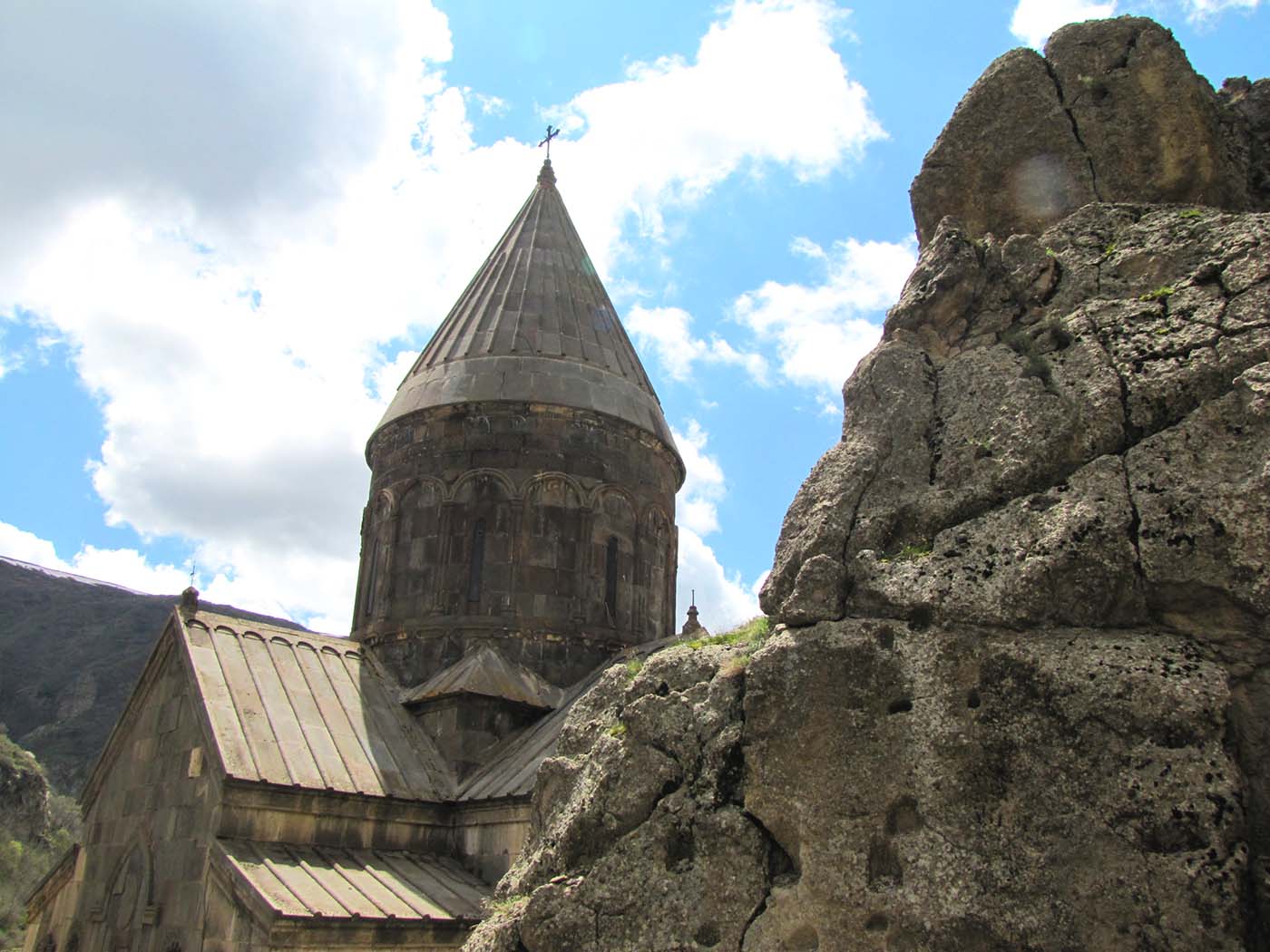Have you ever witnessed a monastery carved directly into a cliff face? The Geghard Monastery stands as an exceptional demonstration of remarkable architectural ingenuity.
Brief info about Geghard monastery
- Status: UNESCO World Heritage Site
- Founded: 4th century by Gregory the Illuminator
- Distance from Yerevan city: Approximately 40 km (25 miles)
- Duration of a trip from the city center: Approximately 1 hour by car or public transportation
- Entrance fee: free of charge
- Surrounding areas: Geghard Monastery is located in the Upper Azat Valley, surrounded by towering cliffs and stunning natural landscapes. The area is also home to other notable sites such as the Garni Temple and the Symphony of Stones rock formation.

Geghard monastery
The Upper Azat Valley and the Geghard Monastery showcase the finest examples of Armenian medieval architecture. The monastery boasts several churches and tombs, all hewn from rock, harmoniously integrated into the stunning natural setting of the region. The entrance to the Azat Valley is defined by towering cliffs, adding to the area’s breathtaking landscape.
The Geghard Monastery has been inscribed on the UNESCO World Heritage Site list.
While visiting Armenia, it is essential to explore some of the country’s most iconic landmarks, including the Geghard Monastery and the Garni Temple.

Cross stones are carved into the rock. Photo by Vardan Papikyan
Founded in the 4th century by Gregory the Illuminator within a cave, the Geghard Monastery was initially called Ayrivank or the Monastery of the Cave. It was one of the hidden churches during the early history of Armenia, but unfortunately, it was destroyed and set ablaze by the Arabs in the 9th century. The monastery also suffered some damage due to an earthquake.

Cross stones carved into the rock. Photo by Vardan Papikyan
However, in 1215, with the aid of the Georgian Queen Tamar’s generals, brothers Zakare and Ivane, the main church in Geghard Monastery was reconstructed. This was during a time when they were supporting Armenia in its battle against the Turks.
In the 13th century, the Armenian Prince Prosh Khaghbakian assumed control of the church and embarked on constructing the Geghard Monastery as it exists today.

The wall sculptures in Geghard Monastery, Armenia
In 1250, the name Geghard was documented for the first time, as the monastery began to house ancient manuscripts. Alongside these documents, various other precious items were also safeguarded at Geghard throughout its history.
Among these was a remarkable artifact – the Holy Lance or Spear. According to tradition, the spear was brought by the Apostle Thaddeus, who was believed to have been a Roman legionary present at the crucifixion of Jesus Christ. In fact, the name “Geghard” itself means “spear,” and thus the Geghard Monastery was often referred to as the “Monastery of the Spear.”
See also some of the popular short tours organized in Armenia by different travel agencies.
